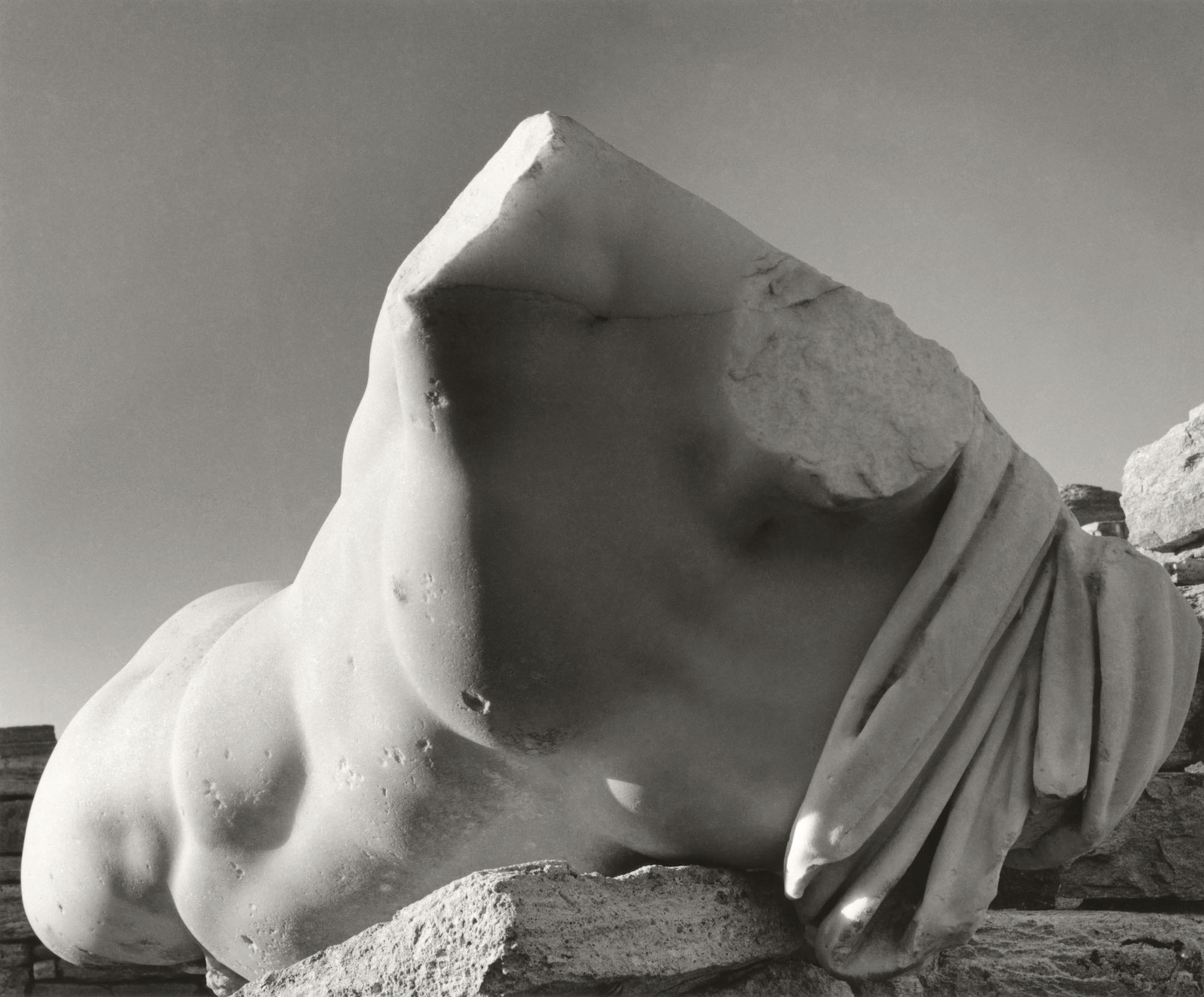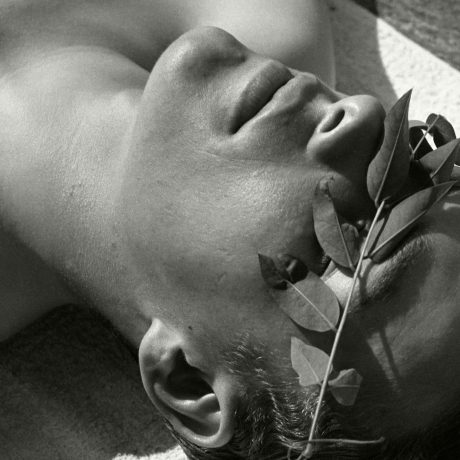
Jean Cocteau once said: “The poet is a liar who always speaks the truth.” It is a sentiment that could just as well be applied to the craft of the photographer, where reality and fiction endlessly intertwine. For German photographer Herbert List, the delicate boundary between the two was frequently blurred in the deeply sensual images that he shot in Greece between 1936 and 1958.
Following his flight from Nazi Germany in 1936, List settled in Athens, from where he travelled extensively across the Greek islands and the Peloponnese. These distinctive craggy landscapes form the backdrop to his studies of the ancient arts and culture of Greece, where smooth sculptures carved from marble and stone contrast with the natural terrain of sand and rock.
In his evocative portrait of the torso of Ophelius Ferus II, located on the island of Delos in the Aegean Sea, the sunlight catches the careful muscular curves of a statue as it leans upon one shoulder. Although hewn from stone, a nipple stands to attention in the light, while the figure’s buttocks loom beyond.
“List summons the myth of Pygmalion, the sculptor who fell in love with a statue of his own making”
As was characteristic of List, the crop is deliberately tight, focusing attention not only on his chosen subject but on his own presence as photographer. It is his choice of framing, making the sculpture seem to stretch suggestively towards the lens, that brings even this cold representation of the human form to life. The fleshiness of lust flickers through it, despite the clear erosion of time.
List summons the myth of Pygmalion, the sculptor who fell in love with a statue of his own making. Formerly a fashion and studio photographer, List’s talent for the twinned truth and lies of the camera can be fully felt in his study of the idealised male form. This figure is all the more perfect for its ineffable unattainability, forever rendered in stone.






